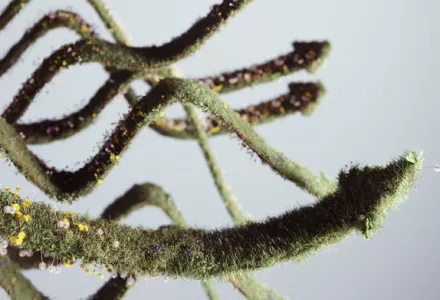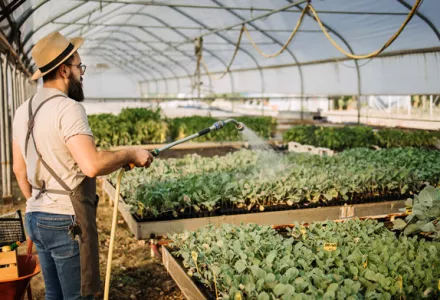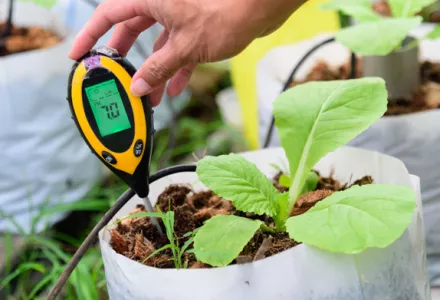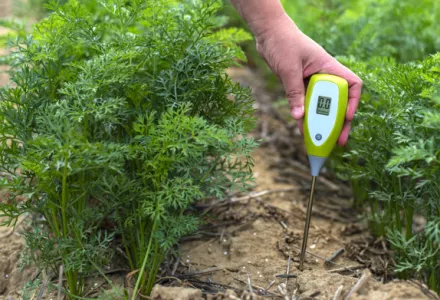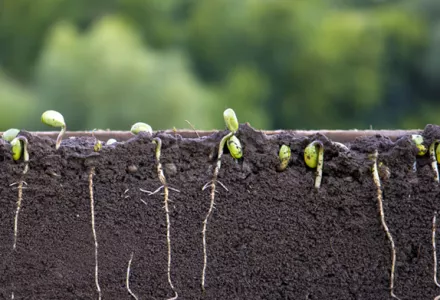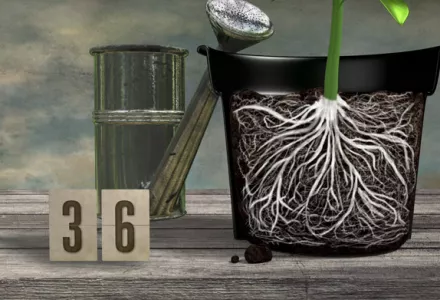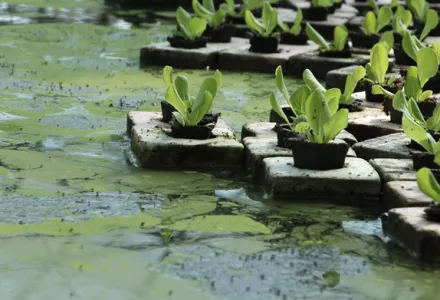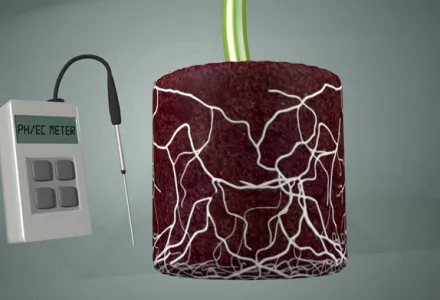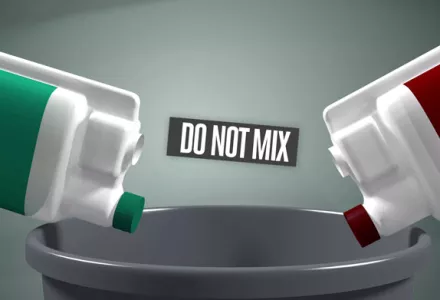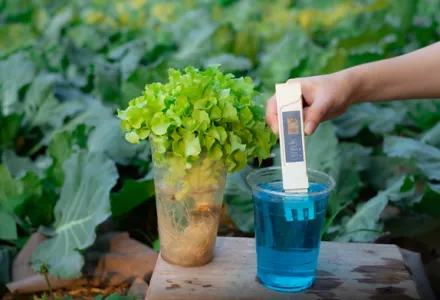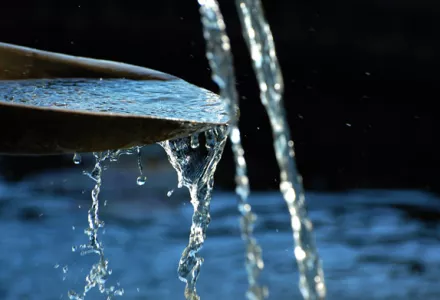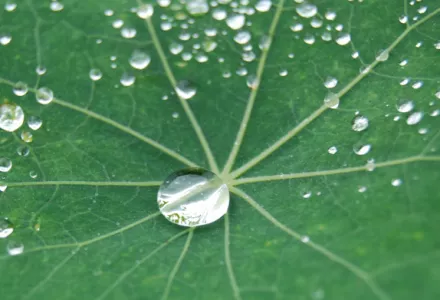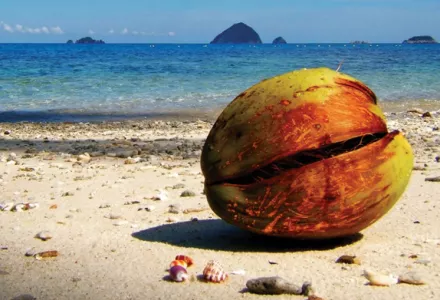Learn more about pH, EC, and water hardness so you can be prepared to do what's best for your grow system and wallet
Water as a conductor of electricity (EC)
Water test results can be intimidating but are an essential part of planning your grow. Let's start with electrical conductivity, EC. As the universal solvent, water dissolves salts and minerals to become ions in solution. If we were to pass an electrical current through mineral solutions of various concentrations, the more concentrated solutions would be able to conduct more electricity. Under this reasoning, ion concentration is measured as electrical conductivity (EC) expressed in milliSiemens per centimeter (mS/cm). So, the more ions in solution means a higher EC. Ion concentration can also be measured as a physical concentration, expressed in parts per million (ppm).
Is EC the same as water hardness? NO!
EC accounts for all of the ions in solution, also known as total dissolved solids. So, when you measure the EC of water at home using a personal meter you are not getting direct information on water hardness or if your water contains specific elements, like chlorine or sodium, which can be harmful in excess. The only way to know with certainty your water hardness and to find out about potential toxicities, is to get your water tested in a lab. Many university labs provide testing that come with guidelines to help you interpret the results and understand what the concern levels are. Plants need their 13 macro and micronutrients delivered in the correct ratios. An excess of one nutrient could lead to the plant absorbing less of another nutrient, creating a deficiency, reducing yield and quality.

Water hardness is an account of calcium, magnesium, and iron, only. These elements are cations with a +2 charge, making them total magnets for bonding with a bicarbonate ion (2HCO3-2). The bicarbonate contributes to alkalinity and helps to buffer water. That's why hard water tends to have a higher pH. In nature, hard water is formed when water percolates through deposits of limestone, chalk, or gypsum and picks up minerals along the way. The southwest with its dry climate and deep water sources like well-water tend to have hard water. According to the United States Geological Survey, soft water has 0-60 ppm calcium carbonate equivalence, water with 61-120 is considered moderately hard, 121-180 is hard, and more than 180 ppm is considered very hard.
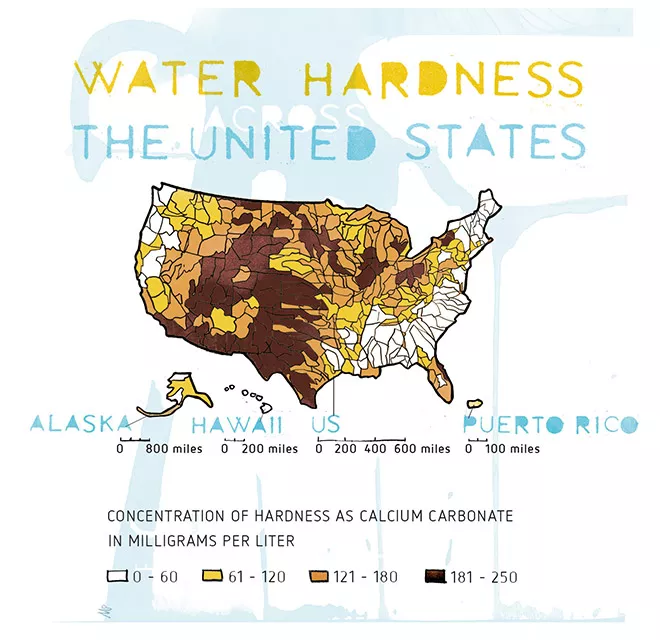
If your original water source has an EC greater than 0.6 mS/cm or is very hard (greater than 180 ppm calcium carbonate equivalence), it is safest to treat your water through RO and add CANNA Calmag. Alternatively, you can mix your original water back in with the RO treated water till you reach an EC of 0.2-0.4 mS/cm, so long as your source water does not contain an excess of toxins. It is not advised to use high EC source water without treatment, which may cause challenges in maintaining a proper watering technique.
Coco substrate and calcium sensitivities
Coco is a substrate that is rather sensitive to the total calcium in the system, so pay attention to water hardness. In a completely coco cultivation system (coco fiber substrate, along with coco-specific nutrients), moderately hard to hard water is generally best. This is 60-180 ppm calcium carbonate equivalence. Some water hardness is helpful for ensuring that the entire system has sufficient calcium and magnesium. Because of coco's calcium sensitivity, the coco needs to be washed and buffered with the ideal ratio of calcium, magnesium, and potassium, prior to use. With that in mind, look to CANNA's coco substrates and our new Coco Flex for carefully prepared coco.
Once you start growing in well-prepared coco medium, the nutrient buffer on the coco needs to be maintained by always applying a nutrient solution high in calcium, designed specifically for coco like CANNA Coco, and by avoiding applying plain water or a poor nutrient solution.
It is also important to water with sufficient drainage, every time. When plain water is poured over the coco, the coco nutrient buffer becomes damaged as some of the calcium and magnesium on the substrate is displaced from the coco medium and is replaced with potassium, which is naturally a part of the medium. This movement happens due to the nutrient elements on the coco substrate striving for a concentration balance with the nutrient elements in the water. This leaves the coco substrate imbalanced, since it has not been maintained with a nutrient solution.
During subsequent feedings with a proper nutrient solution, the coco substrate will attract some of the nutrients from the solution for itself and potentially leave a nutrient shortage for the plant. To fix the issue, a balanced, complete nutrient solution would need to be thoroughly flushed through the coco and it would take some time to repair the nutrient buffer.
The effect of pH
Maintaining the correct pH range is most important in all grow systems – and especially when storing nutrient solution in a reservoir. In such storage, the proper pH will maintain nutrient availability in your solution as intended whereas an incorrect pH may lead to nutrients being less available or combining with other nutrients, rendering them also unavailable.
While in the reservoir, gaseous nitrogen, oxygen, and carbon dioxide will naturally dissolve into the nutrient solution as an effort to create an equilibrium between the gases found in the atmosphere and in liquids. In fact, the ocean is a major sink for carbon dioxide because of this phenomenon. Aerating the nutrient solution with an air stone also adds dissolved carbon dioxide. This added carbon dioxide has the potential to cause pH fluctuations as it reacts with elements in fertilizers and hard water to create pH buffers. For that reason, be sure to only aerate the nutrient solution with a pump if your system truly needs it, such as in a deep water culture system where the submersed roots need to be oxygenated. Also be sure to choose fertilizers designed for submerged root systems and monitor the pH. Nutrient reservoirs that are not aerated will still gain some dissolved gases from the atmosphere, but not in quantities of concern. A simple stirrer can be used as needed to maintain a well-distributed nutrient solution.
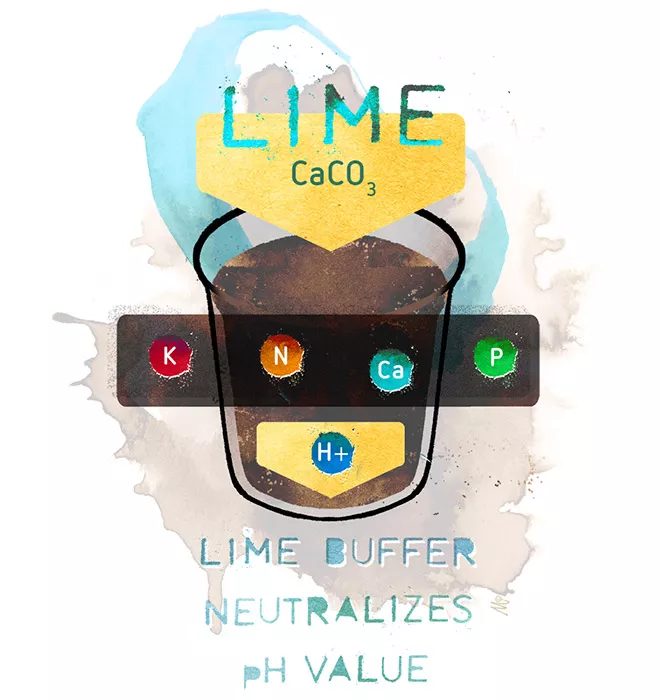
The resilience of soil systems
A soil based system that is properly limed will be able to tolerate a wide range of water quality, due to lime's buffering capability. CANNA's Terra Professional Plus and organic offering of BIOCANNA Bio Terra Plus both offer the security of a well-limed medium that comes with a nutrient charge. Both hard and soft water are generally acceptable for these soil and potting mix based systems and there is no need for additional Calmag, unless your particular variety requires it, since again the expectation is that the soil has been well-limed. As with our BIOCANNA nutrient line, if the solution is going to be stored in a tank, it is best to keep the pH between 5.0-7.0 in order to protect and maintain nutrient quality over time.
Test to stay fresh on your knowledge and enjoy your grow!
Testing your water source and getting to know the specifics of its pH, total EC, elemental composition, and hardness will help give you the knowledge to make the best decisions for your particular grow system. Treatment recommendations can be tweaked to match the needs of your system – whether it's coco, soil, or hydro, and help you get the best results, without spending extra time or money. As always, feel free to reach out to the CANNA team as grow questions come up.

